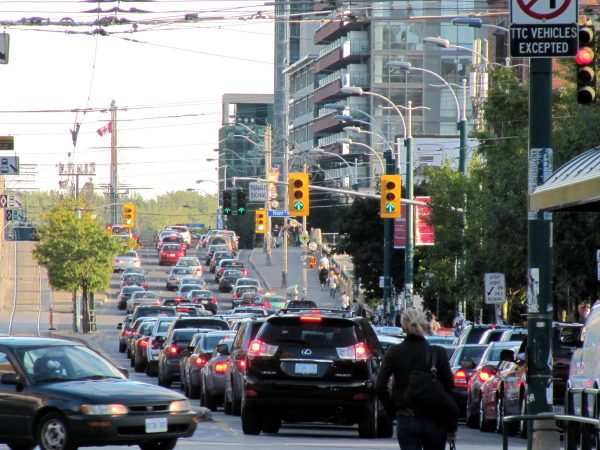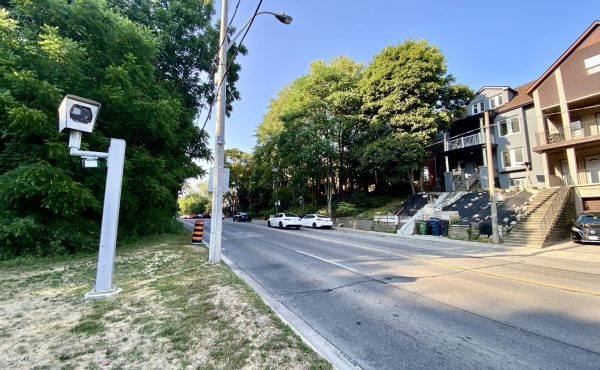How should a city solve major problems without allowing the proposed solutions to inadvertently prevent the solving of said major problems?
This bureaucratic paradox — the outlines of which will be familiar to any civil servant tasked with a big job and limited resources — hangs like a sword of Damocles over a pair of recent city council directives aimed at confronting two of Toronto’s most tenacious headaches: chronic congestion and the enveloping shabbiness of our public realm.
At its April meeting, council voted to appoint a traffic “czar,” who will presumably become the face of the City’s efforts to unclog the streets. It also approved an ambitious “beautiful city initiative” that aims to up our game on urban design, architecture and the care and feeding of parks. The job posting for the manager for the latter task went out this week.
The new traffic czar, an idea which popped out of Mayor Chow’s office, will be tasked, per the motion in council, with focusing “on creative, cross-divisional solutions to tackling congestion and pre-emptively identifying challenges and recommending solutions to get Toronto moving.” The language in the motion offers nothing else by way of specifics, so stay tuned — although no sentient Torontonian should hold their breath for immediate fixes.
By contrast, the beautiful city initiative, which traces specifically to a member’s motion by Josh Matlow, arrived at council fitted out with lots of aspirational details — about improving the methods the city uses to hire architects for municipal projects, reviewing the maintenance and operational practices of the divisions responsible for public space (parks, urban design, planning, etc.), finding ways to make the areas around construction sites less horrible, and launching a PR campaign to show the city is moving its feet. Matlow also wants more beautiful private-sector architecture, in case the scope of the policy isn’t broad enough.
The centrepiece is something that no one outside City Hall will see: the development of a new “internal governance model” aimed at achieving design excellence across several departments whose work touches the public realm, including planning, parks, urban design and transportation services. The proposal reflects the experience of the new chief planner Jason Thorne, whose previous gig, in Hamilton, allowed him to preside over not just planning but other City divisions, like economic development, that had a stake in the appearance of the city.
It’s basically a “getting-us-all-on-the-same-page” outlook, and sounds good — on paper. Thorne’s specific challenge, however, will be busting through City Hall’s various bureaucratic fiefdoms while bringing council along for a ride that entails paying for more than just the bare minimum and dislodging some of the city’s seemingly unshakeable beliefs about cars, public spaces, taxes, late-stage Victorian prudishness, etc.
A highly telling appendix to the staff report reveals the magnitude of the task — a daunting (and only partial) list of 55 sets of existing or proposed guidelines, policies and standards that regulate the urban design aspects of private development, municipal streetscapes, and city parks.
With both efforts, there’s a rhetorical premium on getting presumably feuding bureaucratic strongholds to stop working at cross purposes. The traffic czar’s mandate is to find “creative cross-divisional solutions.” The beautiful city plan hinges on “leadership and coordination.”
The premise, hardly novel, is that if officialdom manages to get everyone marching in the same direction, a thousand flowers will bloom. And there is unquestionably some truth here. After all, it’s really easy to find frustrating examples of the city fighting with itself in all sorts of domains, such as housing.
However, the imperative to find consensus or at least align policy goals ignores the reality that some contradictions are not resolvable. We want density and transit, which means roads get torn up. But the timelines and complexity of undertakings ranging from normal-course street reconstruction to high-rise building projects or major subway schemes are so wildly out of sync that it’s a mug’s game to try to make them fit together like a jigsaw puzzle — and arguably a waste of time.
Then there are the chronic problems of irreconcilable inter-departmental portfolios. Transportation services, to choose the most glaring example, is responsible for the movement of cars, trucks, buses, streetcars, cyclists and pedestrians, as well as the non-vehicular public realm that extends from the curb to property lines or the walls of buildings. These disparate tasks are all in one division because someone, once upon a time, wanted to break down silos.
But the massiveness of the remit means that the brokering among internal interests is opaque, and produces an enormous amount of slow-walking. Case in point: the bus priority lane plan, which is again out for consultation. Or projects like the pedestrianization of John Street, an urbanist fantasy that is nearing the 20-year mark with little to show besides reports.
Finally, the always elusive dilemma of codifying aesthetics. I don’t question the role of design review panels or competitions for public architecture and significant parks initiatives, and there’s certainly a case for increasing the ambition on such civic investments.
But beyond these marquee capital projects, I think we can all agree that urban beauty is in the eye of the beholder, and so the risk with seeking some kind of consensus-backed standard — as happened with the street furniture deal with Astral almost 20 years ago — is that you end up with the kind of compromise that may be inoffensive but is otherwise bland.
Not that anyone’s asking, but I’d urge the city, with both these ambitious schemes, to begin not by, uh, making no small plans, but rather searching for easy wins, a good many of which can be achieved simply with more purposeful management by the divisions themselves.
Such as: Restoring street-cleaning frequency so curb crap is actually cleared regularly. Fixing or replacing all broken park benches and picnic tables, and then adding new moveable ones. Cleaning out the junk that’s accumulated in neglected corners of the public realm (it does get noticed). Purging main streets of orphaned planters and street tree stumps that now serve as ashtrays. Increasing waste/recycling collection in busy parks in the warm weather months. Lots to do here.
Once the city has addressed these table stakes failings, then it can begin a PR campaign, enlisting residents to build on what’s been sorted. Don’t do it in the reverse order.
The beautiful city report correctly reminds members of council and Torontonians that the public realm and public spaces play an increasingly important role in the social life of a densifying city — one that we’ve too often neglected out of a long-standing culture of parsimoniousness and obedience.
What this effort has yet to articulate is how the city’s top officials should go beyond merely informing Torontonians of these initiatives and instead actively empowering them to contribute in ways that go beyond the yearly park clean-up day.
That goal means the city has to cede some control, take risks, resist the compulsion to over-consult, and invest in community-led efforts, as happened when ex-New York transportation commissioner Janette Sadik-Khan kick-started a revolution in Manhattan’s public spaces.
Above all, council and staff need to resist the formulation that in a city as socially and geographically diverse as Toronto, one size can ever fit all. Indeed, Thorne & Co. will be successful if their campaign doesn’t add another entry to the oppressive catalogue of regulations that now mainly serve to cloak Toronto in mediocrity.





